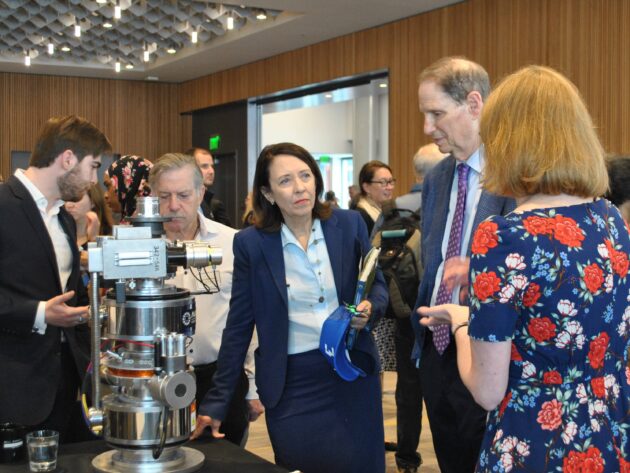
After decades of relative stability in the Pacific Northwest’s energy demands, dramatic changes are coming fast.
Over the next decade, the region’s electricity needs could spike 30%, said Crystal Ball, executive director of the Pacific Northwest Utilities Conference Committee (PNUCC), which aggregates regional utility data.
That increase is comparable to the amount of electricity needed to power seven Seattle-sized cities.
“What we have seen in the last two years is remarkable,” Ball said. “We are seeing a surge in demand for electricity that exceeds PNUCC’s previous forecasts.”
On Monday, Sen. Maria Cantwell, D-Wash., Sen. Ron Wyden, D-Ore., and the Washington Department of Commerce convened an energy summit in Seattle to discuss policies needed to help meet rising power demand.
Event attendees included leaders from utility groups, officials from the U.S. Department of Energy and Pacific Northwest National Laboratory, a tribal representative, and directors of nonprofit organizations. Climate tech companies also participated in a showcase featuring clean energy innovations.
The rapidly growing use of energy-hungry artificial intelligence is helping drive the surge in demand — but it’s not the only culprit. Other factors include the shift away from fossil fuels to the electrification of transportation, home heating and cooling, and industrial processes, as well as growth in high-tech manufacturing processes. On top of that, climate change is stoking more extreme weather events such as heat waves that also increase power demand.
It’s pushing utilities, tech companies and others to scramble for new strategies to put more electrons on the grid.
“There is currently no clear plan or set of projects underway that are sufficient to meet the overall need,” Ball said.

The Pacific Northwest and the U.S. more broadly are continuing to roll out solar and wind power installations, and increasingly adding large-scale, long-duration batteries to store energy. But the grid needs to plug into more energy-generating sources that operate around the clock, such as advanced nuclear, geothermal, and hydrogen power systems.
Panel participants raised ideas for making better use of existing energy sources as part of the solution.
Some discussed drawing power from electric vehicles and putting it on the grid when electricity demand outpaces supply, and figuring out how to adjust energy use by buildings and homes during peak demand. Both ideas need innovation for tapping into those sources in a coordinated way, and demonstrations showing how it works, panel experts agreed.
Cantwell on Monday was also enthusiastic about technologies that improve the performance of the grid to make it more efficient. She said the U.S. should lead the way in “smart grid technology.”
Two years ago the senator played a key role in the passage of the CHIPS and Science Act, a bill authorizing billion of dollars of spending to bolster American innovation and tech hubs, and strengthening domestic manufacturing of semiconductors.
Cantwell called for the development of the best operating systems technology to make the U.S. grid “the most efficient and cost-effective system in the world” no matter what the source of power is.
“That’s what I want to see,” she said, “so I just appreciate everybody’s input on how we get to that.”




